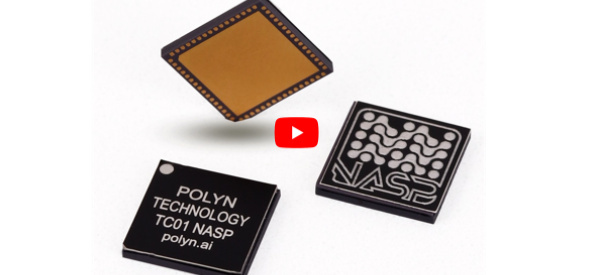Medtech
CES 2023: New AI Chips Save Power by Going Analog [video]
It’s an unavoidable fact: wearables consume power. How much power? Alone, not much. But collectively, a lot. The National Institutes of Health (NIH)…


It’s an unavoidable fact: wearables consume power. How much power? Alone, not much. But collectively, a lot. The National Institutes of Health (NIH) estimates that out of the world’s around 12 billion Internet of Things (IoT) devices, over two billion are health-related. And more than one billion of these health-related devices are wearables. The NIH estimates that wearable healthcare devices alone consume energy that’s equal to what over 17 million solar panels produce. This energy use, the NIH posits, creates a carbon footprint that needs over 11 million conifer trees to offset.
Even on an individual basis, power consumption is important. A wearable that uses less power can be smaller, lighter, and run longer without recharging or replacing a battery. The semiconductor startup POLYN Technology seeks to meet that need through neuromorphic analog signal processing (NASP). While that term may be a mouthful, you only need to look at the brain of any living creature as an example. Our brains process all the analog information around us with minimal power consumption. At peak activity, the human brain spends only about 20 watts of energy on analog processing. Our electronic devices, however, rely on the digital processing of analog information, which requires lots more power. Cloud computing has been the best answer to this need for all-digital processing power.
Until now. POLYN Technology’s NASP Tiny AI chips convert digital neural networks to an analog device that is always on and runs on extremely low power. This conversion takes the load off a device’s main processor and passes along refined data, eliminating the need to process the signal to extract the data. POLYN’s application-specific chips can serve an array of health-wearable needs; they can replace the IMU (Inertial Measurement Unit) and PPG sensors for motion detection and monitoring heart rates, and they can apply to many voice-activated applications.
Aleksandr Timofeev, CEO of POLYN, says, “Sensor applications need a new class of dedicated smart and miniature products, performing data pre-processing near sensors. We are eager to share with the industry our novel approach to implementing neural networks on chip.”

ETF Talk: AI is ‘Big Generator’
Second nature comes alive Even if you close your eyes We exist through this strange device — Yes, “Big Generator” Artificial intelligence (AI) has…
Apple gets an appeals court win for its Apple Watch
Apple has at least a couple more weeks before it has to worry about another sales ban.
Federal court blocks ban on Apple Watches after Apple appeal
A federal appeals court has temporarily blocked a sweeping import ban on Apple’s latest smartwatches while the patent dispute winds its way through…














